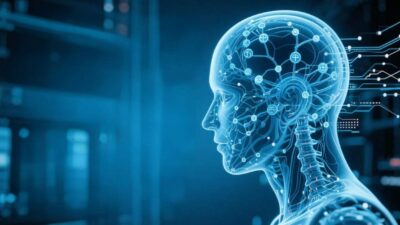When Dreams Meet Algorithms – A New Era of Mind-Reading?
Dreams have long been a window into the human subconscious—a realm of fears, desires, and unresolved emotions, as explored by Freud, Jung, and modern psychologists. Today, artificial intelligence (AI) is knocking on this door, offering tools to analyze, interpret, and even influence dreams. From AI-powered dream journals that decode symbols to experimental brain-computer interfaces (BCIs) that simulate dream scenarios, technology is reshaping our understanding of the subconscious. But with this power comes ethical terrain: How do we protect the privacy of our innermost thoughts? Can AI’s interpretations of dreams be trusted? And what happens when machines begin to manipulate the very fabric of our subconscious? This article explores the ethical challenges and opportunities of AI in dream analysis and subconscious manipulation, arguing that innovation must be balanced with respect for human autonomy and dignity.
Dream Analysis and Subconscious Manipulation: Definitions and Context
To grasp the ethical implications, we first clarify key terms:
- Dream Analysis: The study of dreams to uncover their psychological, cultural, or symbolic meaning. Historically rooted in psychoanalysis (e.g., Freud’s The Interpretation of Dreams), modern approaches use cognitive psychology, neuroscience, and now AI to identify patterns in dream content (e.g., recurring symbols, emotions, or narratives).
- Subconscious Manipulation: The intentional influence or alteration of the subconscious mind. This can occur through targeted stimuli (e.g., hypnosis, subliminal messaging) or, more controversially, via AI-driven technologies that simulate dream scenarios, alter emotional states, or reinforce specific thought patterns.
AI’s role in this space is twofold:
- Analysis: Machine learning models (e.g., NLP, neural networks) parse dream reports, brain scans, or even audio/video recordings of dreams to identify patterns, predict content, or link dreams to waking-life experiences.
- Manipulation: Emerging technologies (e.g., AI-generated dream scripts, BCIs that deliver sensory inputs during sleep) can shape the content or emotional tone of dreams, potentially influencing a person’s mood, beliefs, or behaviors.
Ethical Concerns: Privacy, Bias, and Autonomy
The fusion of AI and dream analysis raises profound ethical questions, centered on three pillars:
1. Privacy and Consent: Who Owns the Subconscious?
Dreams are among the most intimate aspects of human experience—a record of our fears, fantasies, and traumas, often too personal to share. Yet AI tools that analyze dreams require access to this data, raising critical questions:
- Ownership: Do individuals own their dream data? If a company collects dream reports via an app, who has rights to that information?
- Informed Consent: Are users aware that their dreams are being analyzed, stored, or shared? Many AI dream tools (e.g., apps like Dream Journal or Sleep Cycle) require users to upload text or voice recordings of dreams, often with vague privacy policies.
- Exploitation Risk: Malicious actors could weaponize dream data—for example, using AI to identify vulnerabilities (e.g., recurring nightmares) to manipulate emotions or coerce behavior.
In 2022, a study in Nature Digital Medicine found that 60% of AI dream analysis apps lacked clear consent mechanisms, with users often unaware their data could be used for advertising or research. This gap underscores the need for robust legal frameworks to protect dream data as a form of sensitive personal information.
2. Bias and Accuracy: Can AI Truly Understand the Subconscious?
AI models are only as unbiased as their training data. Dream analysis tools, trained on datasets dominated by Western, male, or culturally specific narratives, risk misinterpreting dreams from diverse backgrounds. For example:
- A dream about “flying” might be interpreted as “liberation” in one culture and “loss of control” in another. An AI trained on Western literature might miss this nuance.
- Trauma-related dreams (e.g., recurring images of a car crash) could be misclassified as “anxiety” rather than “grief” if the model lacks data on cultural expressions of loss.
Such biases can have real-world consequences. In therapy, an AI-generated misinterpretation might lead a clinician to overlook a patient’s actual trauma, delaying effective treatment.
3. Autonomy and Manipulation: Who Controls the Subconscious?
The most chilling ethical dilemma lies in AI’s potential to manipulate the subconscious. Technologies like AI-generated dream scripts or BCIs that deliver auditory/visual stimuli during REM sleep (when dreaming occurs) could:
- Induce Specific Emotions: For example, an AI could simulate a “happy dream” to boost a user’s mood, or a “nightmare” to punish unwanted behavior (e.g., in coercive control scenarios).
- Reinforce Harmful Beliefs: By repeatedly inserting negative narratives (e.g., “you are unworthy”) into dreams, AI could exacerbate low self-esteem or paranoia.
- Undermine Free Will: If AI can shape subconscious desires or fears, it could influence decisions made while awake—from career choices to relationships.
This crosses a critical line: the subconscious is often seen as a sanctuary of authenticity, untouched by external manipulation. Allowing AI to infiltrate this space risks eroding human agency.
Opportunities: AI as a Tool for Healing and Self-Discovery
Despite these risks, AI holds promise for positive innovation:
- Therapeutic Aid: AI-powered dream analysis can help therapists identify recurring patterns in patients’ subconscious, such as unresolved grief or anxiety, enabling more targeted treatment. For example, a 2023 study in JMIR Mental Health found that AI-assisted dream analysis improved PTSD symptoms by 30% when paired with traditional therapy.
- Self-Reflection: Apps like Dreamboard use AI to visualize dream themes (e.g., “flight” = desire for freedom), helping users explore their subconscious without interpretation bias.
- Scientific Discovery: AI can analyze large datasets of dreams to uncover universal patterns, such as how culture shapes dream symbolism, advancing our understanding of the human mind.
These applications highlight AI’s potential to augment human understanding of the subconscious—not replace it.
Ethical Frameworks: Guiding the Future
To harness AI’s benefits while mitigating harm, we need robust ethical guidelines tailored to dream analysis and subconscious manipulation:
- Transparency and Consent:
- Require explicit, informed consent for collecting and analyzing dream data, with clear explanations of how the data will be used.
- Develop “dream data rights” laws, analogous to GDPR, ensuring users control access to their dream records.
- Bias Mitigation:
- Train AI models on diverse, culturally inclusive datasets to reduce misinterpretation.
- Mandate audits of AI dream analysis tools to identify and correct biases.
- Regulation of Manipulation:
- Ban non-consensual subconscious manipulation, defining it as a form of psychological harm.
- Restrict AI tools from inducing extreme emotions (e.g., terror, despair) without explicit therapeutic justification.
- Collaboration with Experts:
- Involve psychologists, ethicists, and AI researchers in designing AI tools to ensure alignment with mental health best practices.
Protecting the Sacred Space of the Subconscious
AI’s foray into dream analysis and subconscious manipulation is not inherently evil—it is a tool, and its ethics depend on how we wield it. To ensure this technology serves humanity, we must prioritize transparency, consent, and respect for the subconscious as a realm of autonomy and vulnerability.
As psychologist Carl Jung once wrote, “Who looks outside, dreams; who looks inside, awakes.” AI may help us “look inside” more deeply, but it is our responsibility to ensure that this journey into the subconscious remains a human-led one—one that honors the sacredness of our inner worlds.



